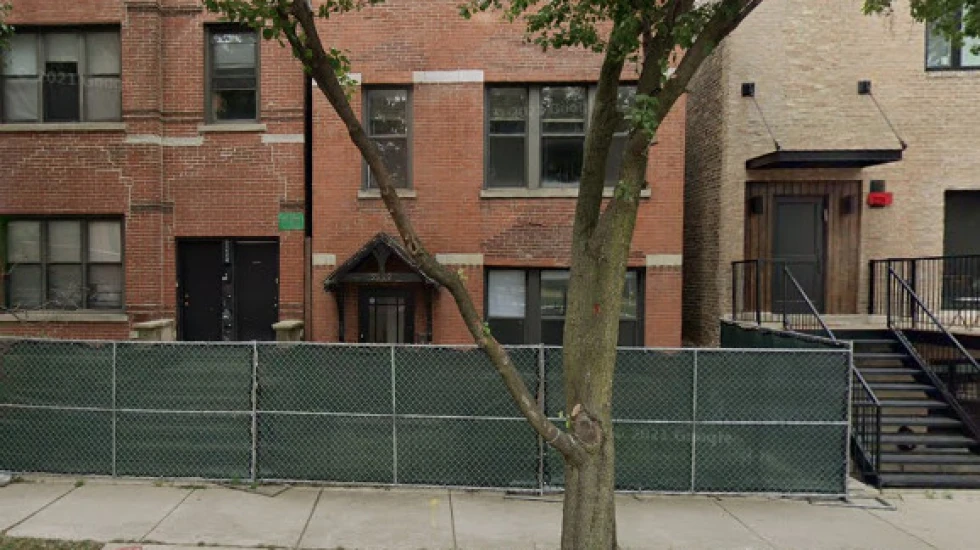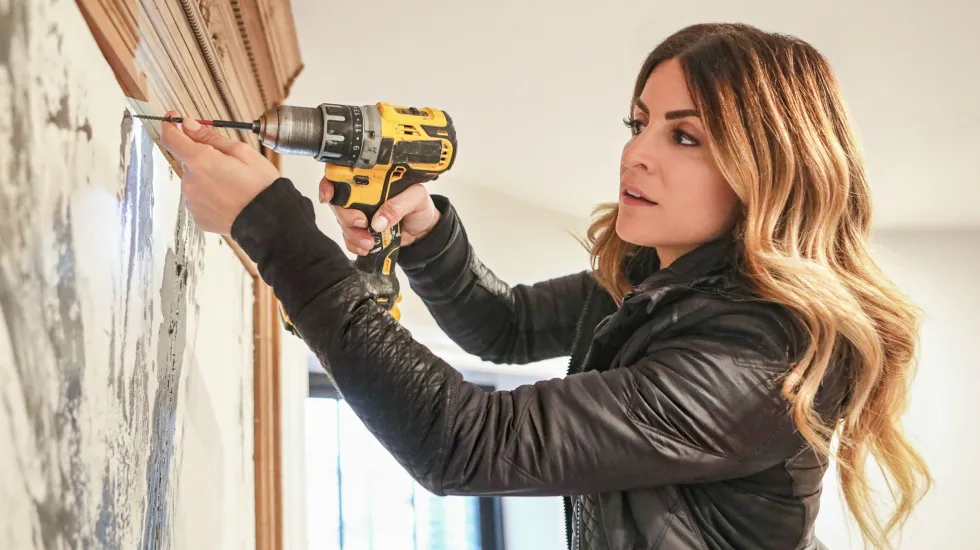
Can a building really be called a rehab if it’s torn down and a new one is built in its place?
That’s the question answered in the second episode of Season 3 of the HGTV hit series “Windy City Rehab,” where host and designer Alison Victoria faces delays and a shrinking budget on a newly constructed six-bedroom building.
Spoilers ahead!
Here’s what went down on episode two:
The house
This week’s house can be found 2222 W. Ohio St., a two-unit building in Ukrainian Village, one of “the hottest neighborhoods in the city” according to real estate agent Vince who tours the house with Victoria.
The exterior of the building shows some serious age, and the inside, while bland and dated, probably looks somewhat familiar to most Chicago renters. The overhang atop the front door is rotting away and cracks in the brick can be seen from the street. Inside, the walls, floors and fixtures look to be “builder grade,” which means boring but ideal for rental units.
Victoria first purchased the building for $500,000 with the help of an unnamed investor, but work-stop orders and further legal and interest expenses caused the bank to drop the loan. When the two were able to secure funding through another bank, they paid $707,000 for the 2,077-square-foot home.
“This project is now just about doing everything we can to avoid a major loss for my investor,” Victoria explains.
The designer decided to tear the whole building down and opt for new construction instead, envisioning a six-bedroom, four-bathroom unit with a basement. Of course, per Victoria’s signature style, the exterior brick will be painted white and will have black trim.

The rehab
Victoria’s construction team “hit the ground running” and manages to lay the foundation, construct the frame, wire the house for electricity and install plumbing rough-ins, all in four months.
While walking through the house with lead designer Kristy, Victoria takes notes. They plan to add vintage lighting to the kitchen, and a mantle to the empty fireplace space upstairs. The hallway between the dining room and kitchen on the first floor will become a butler’s pantry with a custom stained-glass window.
“Nothing will ever obstruct it,” Victoria says of the window.
In an upstairs bathroom, a window was installed lower than originally specced, making the already-purchased mirrors unusable. The window will need to be fixed, Victoria says, lamenting the added cost to her tight budget.
Next, Victoria heads to the Pilgrim Antique Mall in Germantown, Wisconsin, with artist Ari. “This is where I get inspired,” Victoria muses. “This is where I find pieces that I wasn’t even thinking I was looking for.”
She quickly found two corner columns that Ari recommended splitting in half and attaching to the four sides of the kitchen island. Additionally, the designer spotted corbels to go above the coffee station she’s envisioning in the kitchen.
Back in the city, Victoria spots an Art deco-styled mantle that needs some extensions. Ari agreed to do the work.
As the windows are installed at the house, Kristy identifies another problem. Due to problems with an old sewer line, the water meter has to be moved from a closet to a corner of a bedroom. She suggests turning it into a nightstand at first, but Victoria decides to install custom-built cabinets instead with a removeable panel to access the meter. Out of money, the designer begs Ari to trade for the work, and he agrees.
“She gets me great jobs, and my artwork career has exploded from her helping me,” he notes.
Victoria then helps Ari at his workshop in Germantown and picks out the stained-glass window from Fredrick Stained Glass in the city. She opts to paint the mantle rather than try to match the stain. “I try to stain stuff, guys. You wonder why I paint everything black?” she asks the audience.
Ari plans to install the cabinets, range for the kitchen and mantle in one day, but on the day he arrives, the firebox hasn’t been installed. Victoria learned that because the siding was already finished and no one caught the error, it would cost up to $5,000 to fix it.
“This falls on my entire team,” she says. “This falls on me. So I’m not gonna be a hypocritehere and play the blame game. this is my fault. I’ll take the blame.”
In the end, she chooses a ventless fireplace. Now with construction complete, the furniture arrives for showings.
The reveal
Victoria takes realtor Vince on a tour of the new home. Outside, the black trim pops against the painted white brick, and there’s an odd, horizontal line of limestone bisecting the top and bottom halves of the home.
Inside, the dining room now has space for a 10-person table, and the butler’s pantry with the stained glass can easily be seen from the room.
“I’m really willing to take risks in areas like that because they become truly one of a kind,” Victoria says. “They become art.”
Many of the antiques Victoria found were eventually painted. The pillars found at the antique mall were painted gray and attached to the island, and the grayed corbels were now white. Upstairs, the mantle had a green-gray hue.
Vince was impressed with the property overall and suggested listing it for $1.6 million, about $2,000 more than Victoria originally envisioned. (She felt assured in her decision to tear down the original building.)
“I’m so glad I ended up doing new construction because it’s paying off and I was able to get a higher asking price because of it,” Victoria says.







